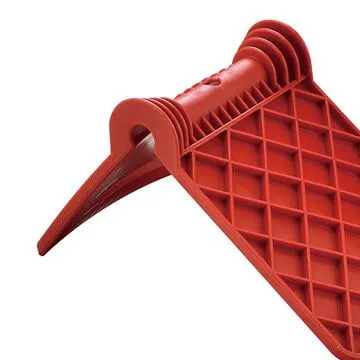10 月 . 08, 2024 22:13 Back to list
Ceiling T Bar Hangers for Secure and Efficient Ceiling Grid Installation
Ceiling T Bar Hangers Essential Components for Suspended Ceilings
Ceiling T bar hangers play a crucial role in the installation and support of suspended ceilings in commercial and residential buildings. These metal hangers are designed to securely hold and stabilize lightweight ceiling tiles, providing both structural integrity and an aesthetically pleasing finish. Understanding the function, types, and installation process of T bar hangers is essential for anyone involved in construction, renovation, or interior design.
Understanding T Bar Hangers
T bar hangers are typically made from galvanized steel or other durable materials to ensure longevity and resistance to corrosion. Their primary purpose is to suspend a grid system from the ceiling structure above, ensuring that the ceiling tiles remain level and securely in place. The T bar grid system consists of main runners and cross tees that create a framework for laying ceiling tiles. Hangers are usually spaced at regular intervals to distribute the weight evenly and provide stability.
Types of T Bar Hangers
There are various types of T bar hangers, each designed for specific applications
. The most common types include1. Wire Hangers These are flexible and easy to install, typically made of steel wire. They can be adjusted to fit various ceiling heights and are often used for lighter ceiling systems.
2. Rod Hangers These hangers are made from solid metal rods and are more suitable for heavier ceilings. They provide a robust solution for commercial applications where added support is necessary.
3. Ceiling Clip Hangers These are specialized brackets that attach directly to the existing ceiling structure, allowing for a quicker installation process. They are ideal for retrofitting suspended ceilings in existing spaces.
ceiling t bar hangers

Installation Process
The installation of T bar hangers is straightforward but requires careful planning to achieve a professional finish. Here are the steps typically involved in the installation process
1. Planning Before installation, it's important to measure the space accurately and decide on the layout of the ceiling grid.
2. Marking Mark the locations for the hangers on the ceiling joists or structural beams. The spacing of the hangers typically depends on the local building codes and the type of ceiling tile being used.
3. Hanging Attach the hangers to the marked locations, ensuring they are securely fastened. The hangers should be level, as this will directly affect the appearance of the finished ceiling.
4. Installing the Grid Once the hangers are in place, install the main runners and cross tees, following the manufacturer’s guidelines for spacing and alignment.
5. Placing Ceiling Tiles Finally, place the ceiling tiles into the grid system, ensuring they fit snugly and are properly supported.
In conclusion, ceiling T bar hangers are vital for creating stable and aesthetically pleasing suspended ceilings. Their proper selection and installation can make a significant difference in the overall appearance and functionality of a space. Whether for a commercial office, retail environment, or a residential setting, understanding the role and application of T bar hangers is essential for any construction professional.
-
Revolutionizing Interior Design with Ceilings t grid Suspended SystemNewsOct.29,2024
-
Revolutionizing Ceiling Design with ceiling access panel with Gypsum Tile WaterproofNewsOct.29,2024
-
Revolutionizing Interior Design with PVC Gypsum Ceiling: A Comprehensive GuideNewsOct.29,2024
-
Elevating Interior Design with High quality Mineral Fiber Ceiling TilesNewsOct.29,2024
-
Revolutionizing Interior Design with PVC Gypsum Ceiling: A Comprehensive GuideNewsOct.29,2024
-
Elevating Interior Design with High-Quality Mineral Fiber Ceiling Tiles: A Comprehensive GuideNewsOct.29,2024







